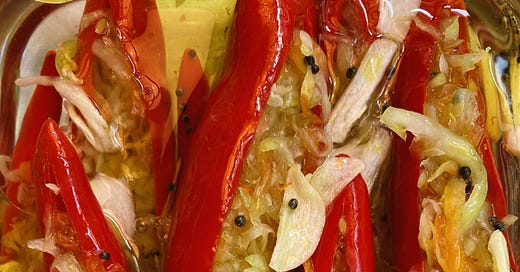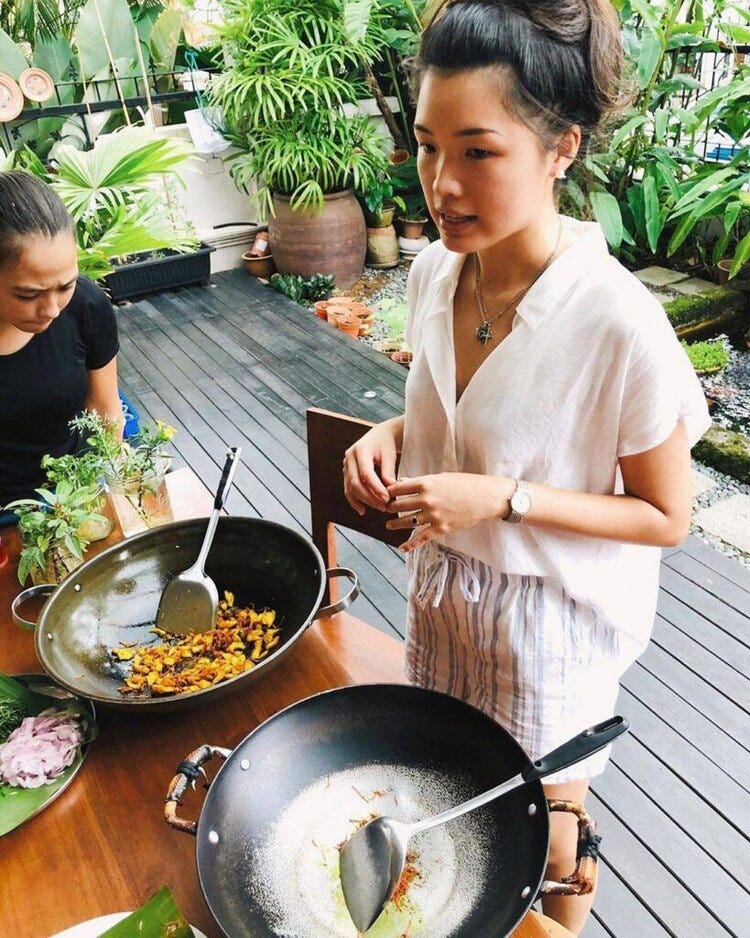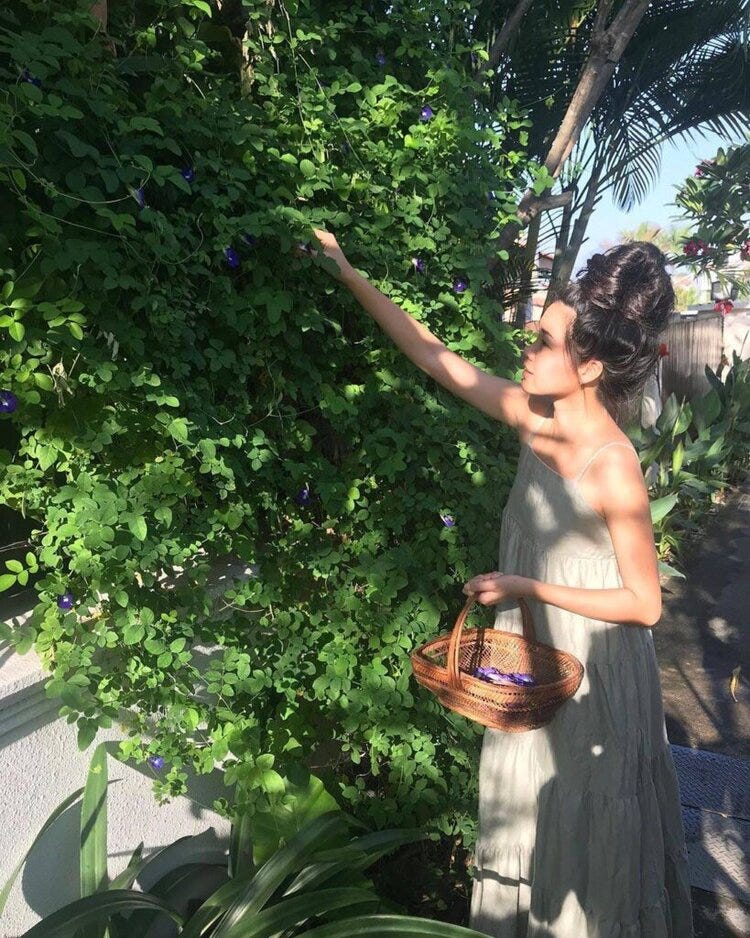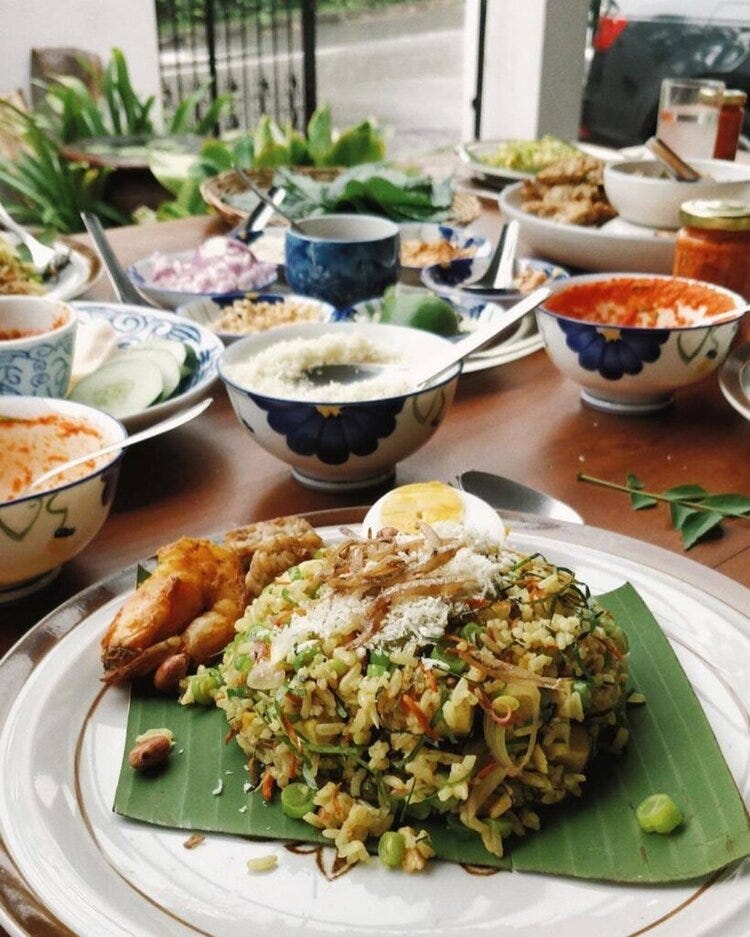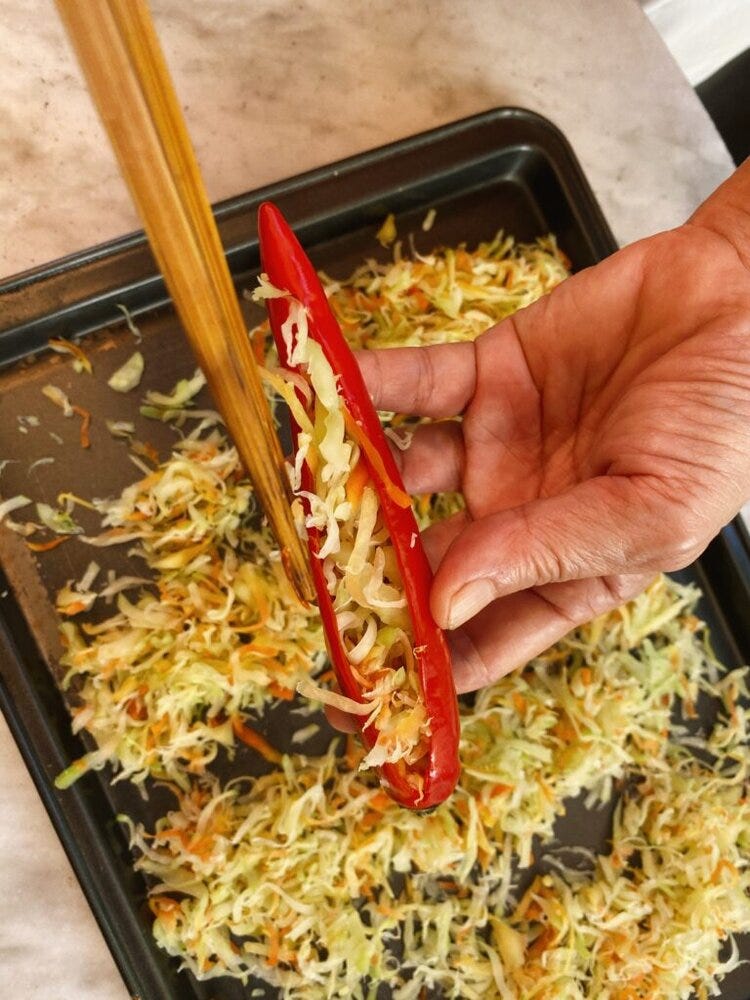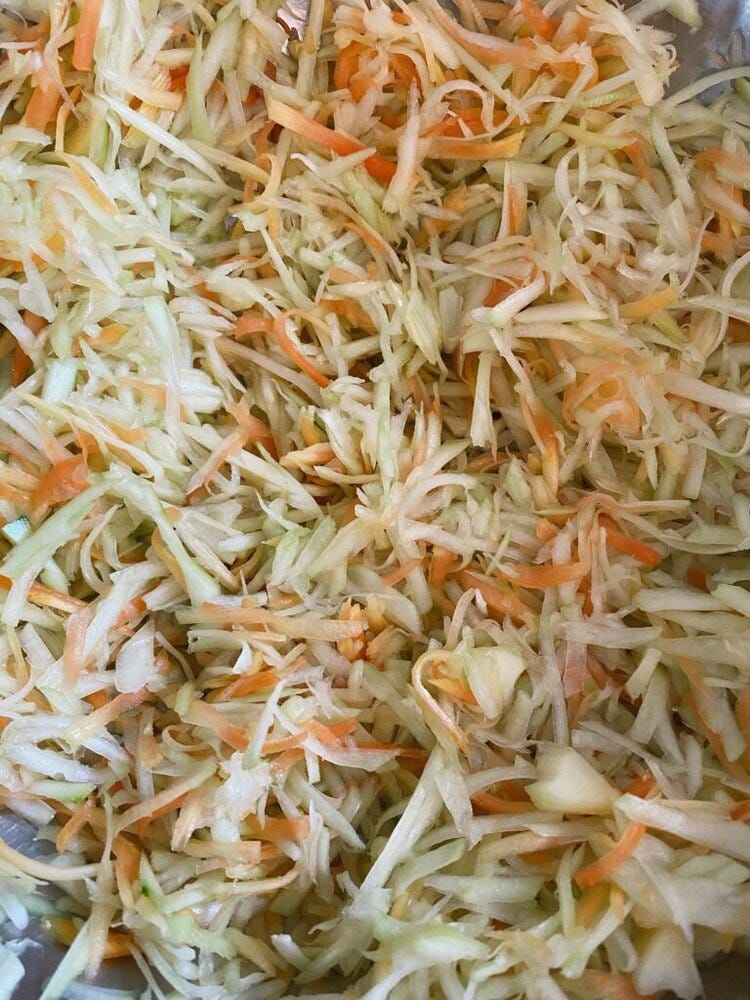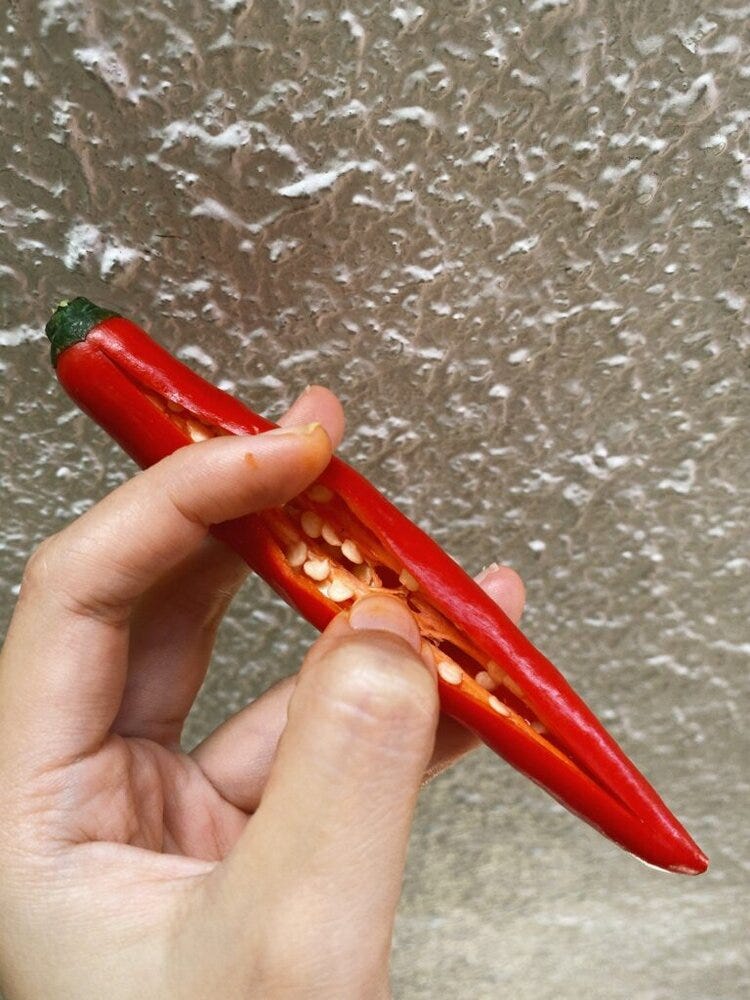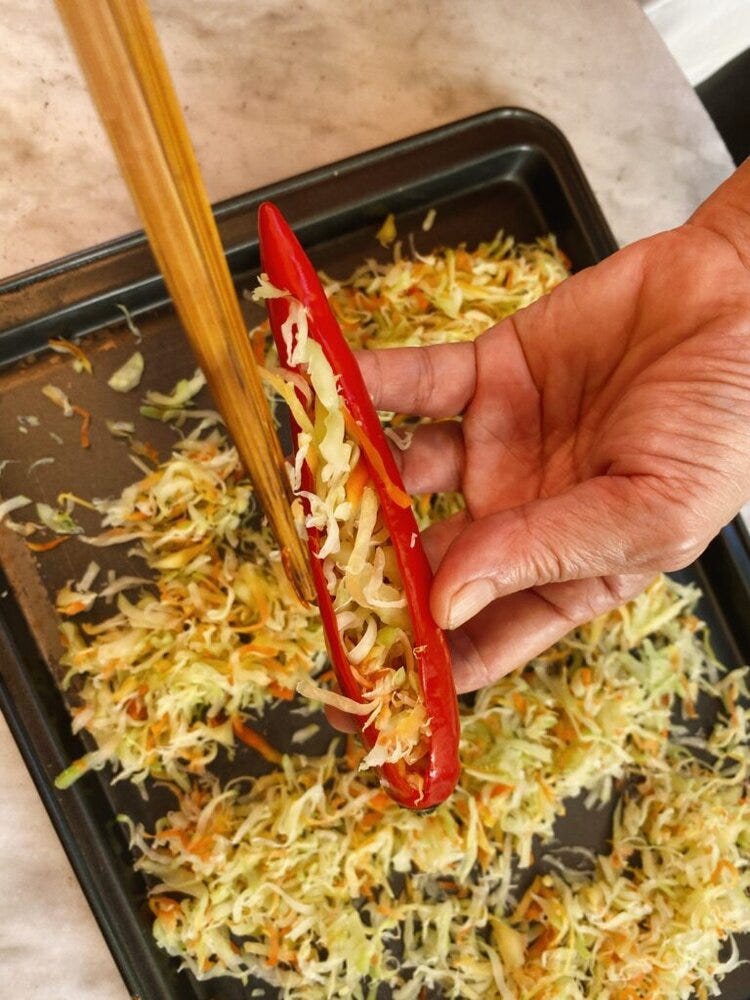This recipe belongs to Justine, who owns a small urban agriculture business, The Farmers, with her husband Scott. Named after the couple’s surname, the business focuses on dinners and workshops that reconnect participants to food and the land.
The couple places a strong emphasis on growing local produce and highlighting them through local dishes. One dish that is recurrent on their menu is nasi ulam, which is a family favourite of Justine’s.
“There is so much variety of local crops that have been largely forgotten as people move towards more non-native dishes and ingredients… It’s so hard to find these herbs in the supermarkets/ wet markets nowadays. As a result, people tend to forget about them and a lot of the younger generation aren’t even aware. It’s a pity because these herbs are our heritage! And they are full of medical benefits too,” say The Farmers in an interview with Tender Gardener.
Justine has graciously shared her family’s recipe for achar huan cheo, which is vanishing in the Singaporean foodscape. Here’s what she has to say, in her own words.
I remember being commandeered to help in the kitchen by my late-grandmother (then the matriarch of our family) from a very young age. She would give me mundane jobs like grinding spices, preparing sambal belachan (chilli with shrimp paste), and chopping vegetables. I was always assisting her, and rarely could cook on my own.
I began to lose interest in the kitchen, though it was the perut rumah (stomach) of our house. I’d decided in my teenage years that that life and those activities were not for me. (The exception was during Chinese New Year, when I had to help in the buah keluak production line.)
I realized that homework, ballet and friends were a good excuse to escape Peranakan cooking. There were always math equations to solve, pirouettes to practice, and friends to hang out with.
Times have changed. Before, the kitchen was the only dominion of Peranakan womenfolk. Exceptional cooking was considered to be the cardinal touchstone of a good woman. Today, most of us have access to education and opportunities beyond the kitchen that offer higher income and less manual work. Add to that the fast-pace and changing values of the society we live in today, it seems only natural that the painstaking and lengthy preparations of Peranakan cuisine would lose its appeal to the younger Nyonyas.
Luckily for me, I had a cliché experience in 2018 where the old adage ‘absence makes the heart grow fonder’ really struck a chord. Traveling with Scott made me acutely aware of how unique the spices and flavours I’d grown up eating were. While we were tasting all sorts of pleasures, I craved for my mother’s nasi ulam with chilli chukka and achar.
After returning home, I spent months shadowing my mother in her kitchen. I took notes on closely guarded secrets (about rempah and family gossip) handed down to her from our elders.
In my view, this is a good beginner’s dish. While it introduces the elaborate art of Peranakan cooking, it only calls for a handful of ingredients. Peranakan cooking is tedious, and this recipe is no different. However, the steps are not difficult and can be undertaken at a leisurely pace. The communal nature of Peranakan cooking makes it fun, so consider doing this in a group. Many hands make light work!
Enjoy achar huan cheo alongside meals as a tangy accompaniment or simply munch on it as a healthy afternoon snack! The fermentation process changes the flavour profile of the chillies into something less spicy and much more refreshing and zesty.
Justine Ong’s Achar Huan Cheo
1 unripe (green) papaya, skinned, shredded
1 1/4 teaspoon salt
3 tablespoons sugar
150ml vinegar, preferably white rice vinegar
10 large chillies
2 cloves garlic, sliced thinly
3 tablespoons cooking oil
20g turmeric root, julienned
1 teaspoon mustard seeds
Toss the shredded papaya with 1 teaspoon of salt. Drain in a colander for half an hour. Squeeze the papaya and spread on a tray. Sun dry for 1 hour or until dry to the touch.
Combine the remaining 1/4 teaspoon of salt with the sugar, vinegar and 150ml water. Boil for 1 minute and allow to cool. Adjust the seasoning to your liking. Make a slit in the chillies and remove the seeds.
Stuff the chillies with the sundried papaya and steam for 2 minutes. Lay in a glass dish. Scatter over garlic slices. Pour the vinegar mixture over chillies.
Heat oil and fry turmeric until aromatic and the turmeric turns dark orange. Remove the turmeric and add mustard seeds. Once the seeds crackle, turn off the flame and allow to cool. Pour over chillies and allow to pickle at least 1 day.

